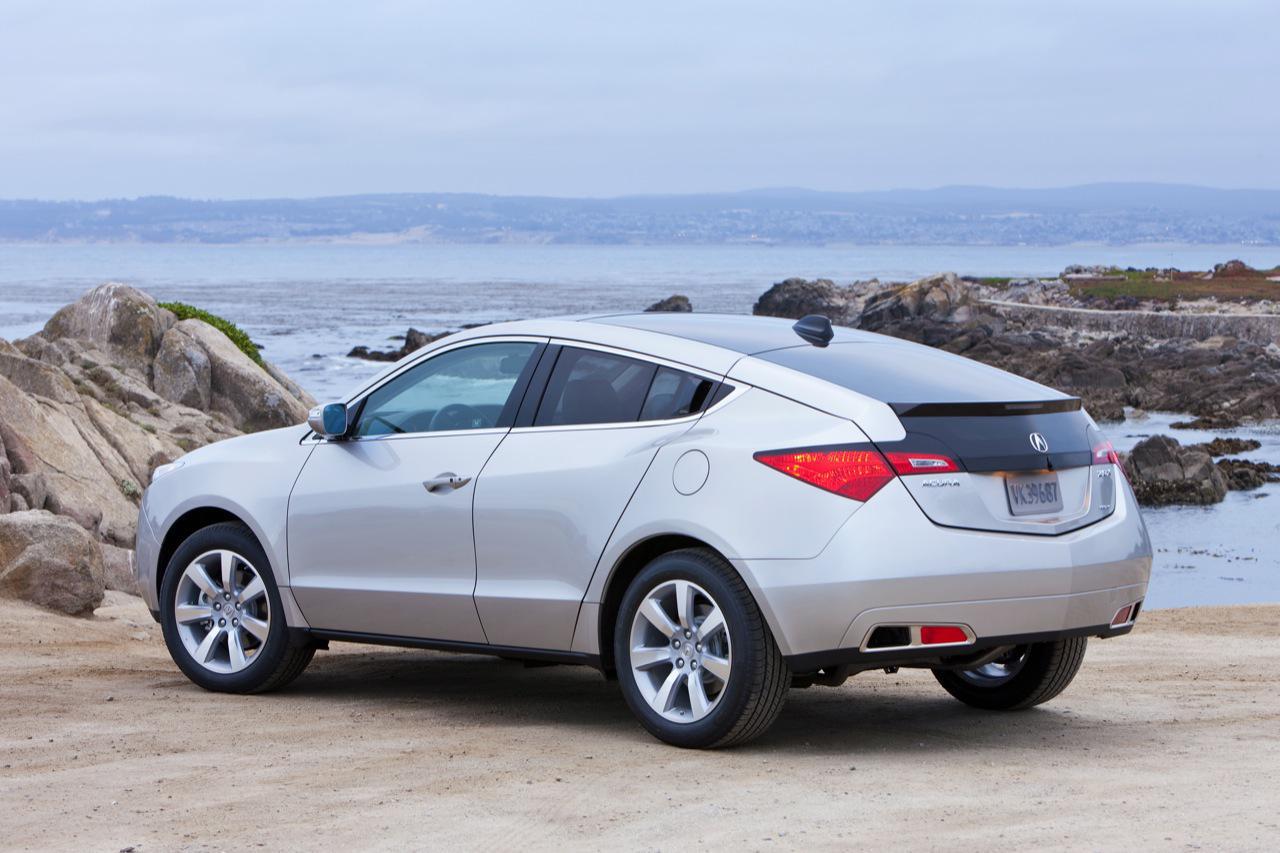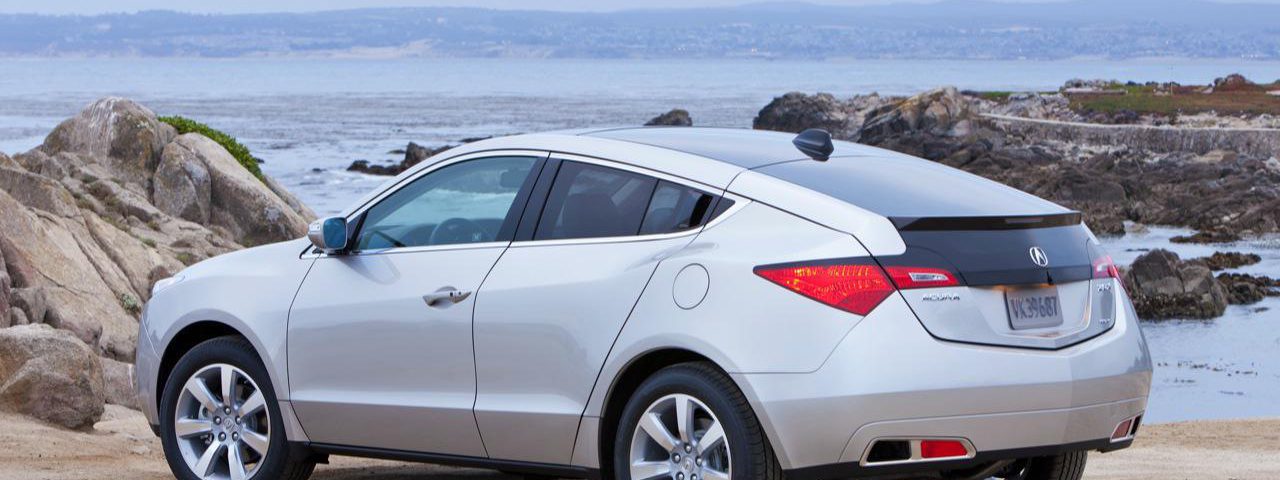
We Drove a two thousand sixteen Mazda CX-9 Prototype and Found Out It’s Pretty Good
We told you all about the fresh two thousand sixteen Mazda CX-9 last week, and now we get to tell you how it drives. Sort of. Prior to the vehicle’s unveil, we were cut liberate in the camouflaged prototypes you see here along a congested, surface-street-heavy route in Los Angeles intended to mimic the sorts of situations owners would most frequently practice. Our particular portion of the route was something like eleven miles long, however, so you’ll get no major dynamic impressions from us today. Still, there were conclusions to draw.
Conclusions about the structure, steering, and rail quality, for example. The fresh CX-9 felt solid, and we didn’t hear any rattles or peeps despite the SUV’s prototype status and placeholder interior trim, which was hidden behind vinyl curtains. The steering is as accurate, as well-weighted, and as possessed of linear build-up as anything you’ll drive from Mazda. These were qualities we loved about the steering in the previous-generation model and ones which we’re glad to see present here. The steering imparts a sense of confidence in placing the CX-9, which, despite being as many as 300-ish pounds lighter than before, nevertheless still is a big vehicle.
The suspension tune was merely “close” and not production-ready, but the rail was hard and not harsh, and the CX-9 exhibited far less assets roll than you practice in most vehicles of this type. We did detect a little bit of nervousness to the wheel travel while traversing pockmarked asphalt, but that might be remedied by either the production-spec tune or smaller wheels and tires (the vehicles we drove all had 20-inch wheels; the other option measures eighteen inches). In any event, it didn’t affect occupant convenience or the CX-9’s feeling of stability. The brakes are strong and suggest nice, progressive pedal feel and travel.
The fresh CX-9 adopts a turbocharged version of the company’s Two.5-liter Skyactiv four-cylinder in place of the outgoing model’s V-6. Mazda says it downsized the engine and went turbocharged for two reasons. Very first, the turbo engine could be tuned to meet the driving needs of the vast majority of customers, delivering slew of torque for more shove in slower slogs like the one we experienced. As a result, the CX-9 makes just two hundred twenty seven horsepower on 87-octane regular gasoline and two hundred fifty on ninety three octane but a maximum of three hundred ten lb-ft of torque no matter which fuel is chosen. In normal driving, the throttle was responsive but never jumpy, and the CX-9 moved smartly away from a stop. Darting into openings in traffic was similarly effortless at sub-freeway speeds, but with a torque curve that’s more mountain than mesa, it can feel slightly winded when above five thousand rpm or so.
The fresh engine makes its maximum three hundred ten lb-ft of torque at two thousand rpm against the old V-6’s two hundred seventy lb-ft at four thousand two hundred fifty rpm. Both premium- and regular-fuel horsepower peaks are at five thousand rpm. Mazda demonstrated us a very useful output-curve illustration, but we’re not permitted to share it. The upshot is this: From idle to four thousand rpm, the torque and horsepower forms on either fuel are identical. Beyond four thousand rpm, the output kinks diverge slightly, but Mazda asserts and we concur that most drivers won’t spend time in that part of the rev range—and that they won’t notice much of a difference if they do.
The 2nd reason for the forced-induction four was that engineering and producing this engine was magnitudes cheaper than adapting the old six to the newer Skyactiv specs. Mazda says it would have needed to redo that engine’s variable-valve-timing hardware; update it to direct injection; install fresh goes, pistons, and connecting rods; and rework the harass manifold. To create the four, all that was needed—to put it in plain terms—was to add the “Dynamic Pressure Turbo” and intercooler. And with fewer cylinders, the four naturally has lower pumping losses and mechanical friction, leading to improved efficiency. Efficiency also is helped by the use of a cooled exhaust-gas recirculation system plumbed in before the turbo; cooling the harass gases this way reduces the need to use wasteful fuel enrichment to do so within the cylinders.
For now, that’s it. We’ll need to slide behind the wheel of the final product to get more finish impressions, but our early practice indicates that the next-gen CX-9 is as promising from behind the wheel as on the auto-show floor. Head here to learn even more about the two thousand sixteen CX-9 and here if you’d like to see it without the swirly vinyl wrap.
2016 Mazda CX-9 Prototype Drive: It s Pretty Good – News – Car and Driver, Car and Driver Blog
We Drove a two thousand sixteen Mazda CX-9 Prototype and Found Out It’s Pretty Good
We told you all about the fresh two thousand sixteen Mazda CX-9 last week, and now we get to tell you how it drives. Sort of. Prior to the vehicle’s unveil, we were cut liberate in the camouflaged prototypes you see here along a congested, surface-street-heavy route in Los Angeles intended to mimic the sorts of situations owners would most frequently practice. Our particular portion of the route was something like eleven miles long, however, so you’ll get no major dynamic impressions from us today. Still, there were conclusions to draw.
Conclusions about the structure, steering, and rail quality, for example. The fresh CX-9 felt solid, and we didn’t hear any rattles or peeps despite the SUV’s prototype status and placeholder interior trim, which was hidden behind vinyl curtains. The steering is as accurate, as well-weighted, and as possessed of linear build-up as anything you’ll drive from Mazda. These were qualities we loved about the steering in the previous-generation model and ones which we’re glad to see present here. The steering imparts a sense of confidence in placing the CX-9, which, despite being as many as 300-ish pounds lighter than before, nevertheless still is a big vehicle.
The suspension tune was merely “close” and not production-ready, but the rail was hard and not harsh, and the CX-9 exhibited far less bod roll than you practice in most vehicles of this type. We did detect a little bit of nervousness to the wheel travel while traversing pockmarked asphalt, but that might be remedied by either the production-spec tune or smaller wheels and tires (the vehicles we drove all had 20-inch wheels; the other option measures eighteen inches). In any event, it didn’t affect occupant convenience or the CX-9’s feeling of stability. The brakes are strong and suggest nice, progressive pedal feel and travel.
The fresh CX-9 adopts a turbocharged version of the company’s Two.5-liter Skyactiv four-cylinder in place of the outgoing model’s V-6. Mazda says it downsized the engine and went turbocharged for two reasons. Very first, the turbo engine could be tuned to meet the driving needs of the vast majority of customers, delivering slew of torque for more shove in slower slogs like the one we experienced. As a result, the CX-9 makes just two hundred twenty seven horsepower on 87-octane regular gasoline and two hundred fifty on ninety three octane but a maximum of three hundred ten lb-ft of torque no matter which fuel is chosen. In normal driving, the throttle was responsive but never jumpy, and the CX-9 moved smartly away from a stop. Darting into openings in traffic was similarly effortless at sub-freeway speeds, but with a torque curve that’s more mountain than mesa, it can feel slightly winded when above five thousand rpm or so.
The fresh engine makes its maximum three hundred ten lb-ft of torque at two thousand rpm against the old V-6’s two hundred seventy lb-ft at four thousand two hundred fifty rpm. Both premium- and regular-fuel horsepower peaks are at five thousand rpm. Mazda demonstrated us a very useful output-curve illustration, but we’re not permitted to share it. The upshot is this: From idle to four thousand rpm, the torque and horsepower kinks on either fuel are identical. Beyond four thousand rpm, the output kinks diverge slightly, but Mazda asserts and we concur that most drivers won’t spend time in that part of the rev range—and that they won’t notice much of a difference if they do.
The 2nd reason for the forced-induction four was that engineering and producing this engine was magnitudes cheaper than adapting the old six to the newer Skyactiv specs. Mazda says it would have needed to redo that engine’s variable-valve-timing hardware; update it to direct injection; install fresh goes, pistons, and connecting rods; and rework the harass manifold. To create the four, all that was needed—to put it in ordinary terms—was to add the “Dynamic Pressure Turbo” and intercooler. And with fewer cylinders, the four naturally has lower pumping losses and mechanical friction, leading to improved efficiency. Efficiency also is helped by the use of a cooled exhaust-gas recirculation system plumbed in before the turbo; cooling the harass gases this way reduces the need to use wasteful fuel enrichment to do so within the cylinders.
For now, that’s it. We’ll need to slide behind the wheel of the final product to get more accomplish impressions, but our early practice indicates that the next-gen CX-9 is as promising from behind the wheel as on the auto-show floor. Head here to learn even more about the two thousand sixteen CX-9 and here if you’d like to see it without the swirly vinyl wrap.
